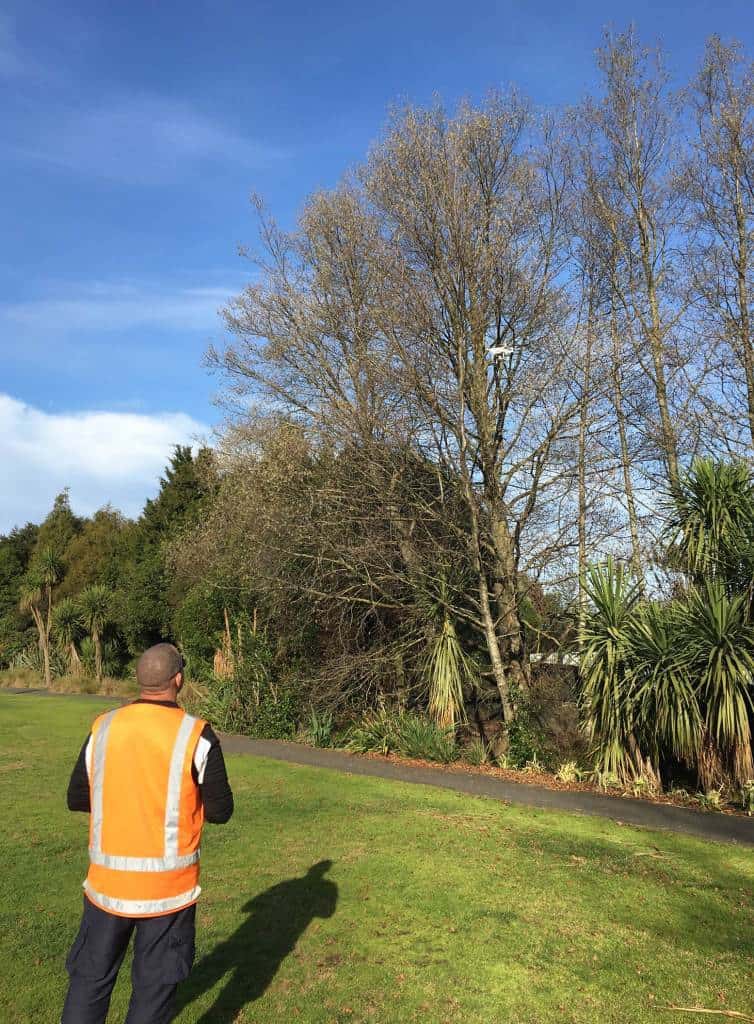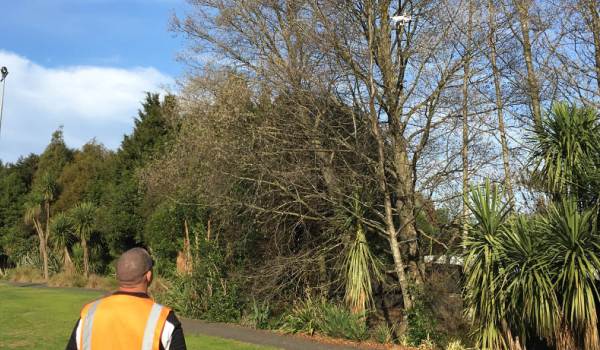WEL Networks news
Smash through gorse or send up a drone?
It’s an easy choice for WEL Networks staff who are now routinely using unmanned aerial vehicles, or ‘drones’ for a bird’s eye view of power lines in what’s proving to be a positive business decision.

During the past 18 months, WEL Networks has introduced five drones to their maintenance programme and according to Field Service Delivery Manager, Mark Keller the results so far have been “brilliant”.
Keller says the drones can assist in a number of tasks like inspecting the top of poles and managing vegetation and they’re extremely valuable in remote areas.
“In the past when we needed to inspect lines through gullies we had to send people out to walk through all the gorse across difficult terrain, which might take two or three hours on foot. Now we can fly the drones through in a matter of minutes. It is definitely a lot more efficient – it’s quicker and much safer for our patrols.”
“It’s become one of the most important tools in our toolkit when it comes to protecting our staff in lone worker situations.”
Keller says another significant benefit is the ability to see things that they can’t normally see from the ground, such as damage at the very top of poles and finding branches which are growing too close to power lines.
“Some of the wooden poles get holes in their core, or some of the concrete poles get damaged on the top which of course we can’t see from the ground or even up high in buckets so by flying the drone over the top of the line we can find potential damage on the network before there’s an issue.”
Drones can also hover above lines to identify damage after weather events.
The value of using drones on the network was highlighted recently when stringing up new lines to a repeater on the Hakarimata Hill, north of Hamilton. Instead of using a helicopter at a considerable cost, WEL used a couple of drones to plot the best position for the poles.
“Two guys with a drone took three hours to complete the work, rather than flying in a helicopter for the same amount of time. It is a huge difference in cost and a lot easier to direct the drone up and down. That was a significant cost saving for us as a business.”
He also explains that WEL understands there are privacy concerns around the use of drones and is assuring members of the public they’re following all the rules set down by the relevant regulatory organisations.
“We have an Unmanned Aircraft Operator Certificate issued by the Civil Aviation Authority and we’re adhering to all local Council requirements. We’ve also developed our own policy guidelines around our drone use and any images gathered by the drones are stored securely and in alignment with our privacy principles.”
Although, often the footage recorded of Waikato countryside is so stunning and unique that landowners request a copy for the family archives.
“WEL staff have also made a commitment to be the best in service…five staff have recently completed specialist flight training at the Massey University School of Aviation to become certified drone pilots.”
Due to the success of the new assets WEL Networks is looking to grow its drone fleet, including introducing a larger unit with an infra-red heat sensor and ultraviolet camera, which can pick up damaged insulators or connectors before they actually fail.
“This will allow us to repair the damage through a planned outage, rather than affecting our customers with an unplanned outage which is generally of a longer duration outage because we have to spend time trying to find the fault before we begin work.
“It saves us significant time and money and reduces the inconvenience for our customers.”
“There are so many advantages when using drones. It’s like another pair of eyes helping to keep our network safe, and delivering a reliable power supply to our communities.”

